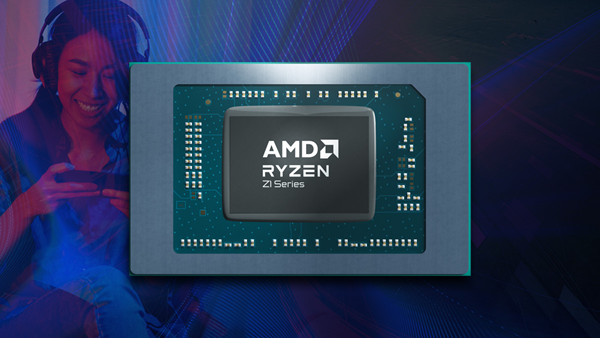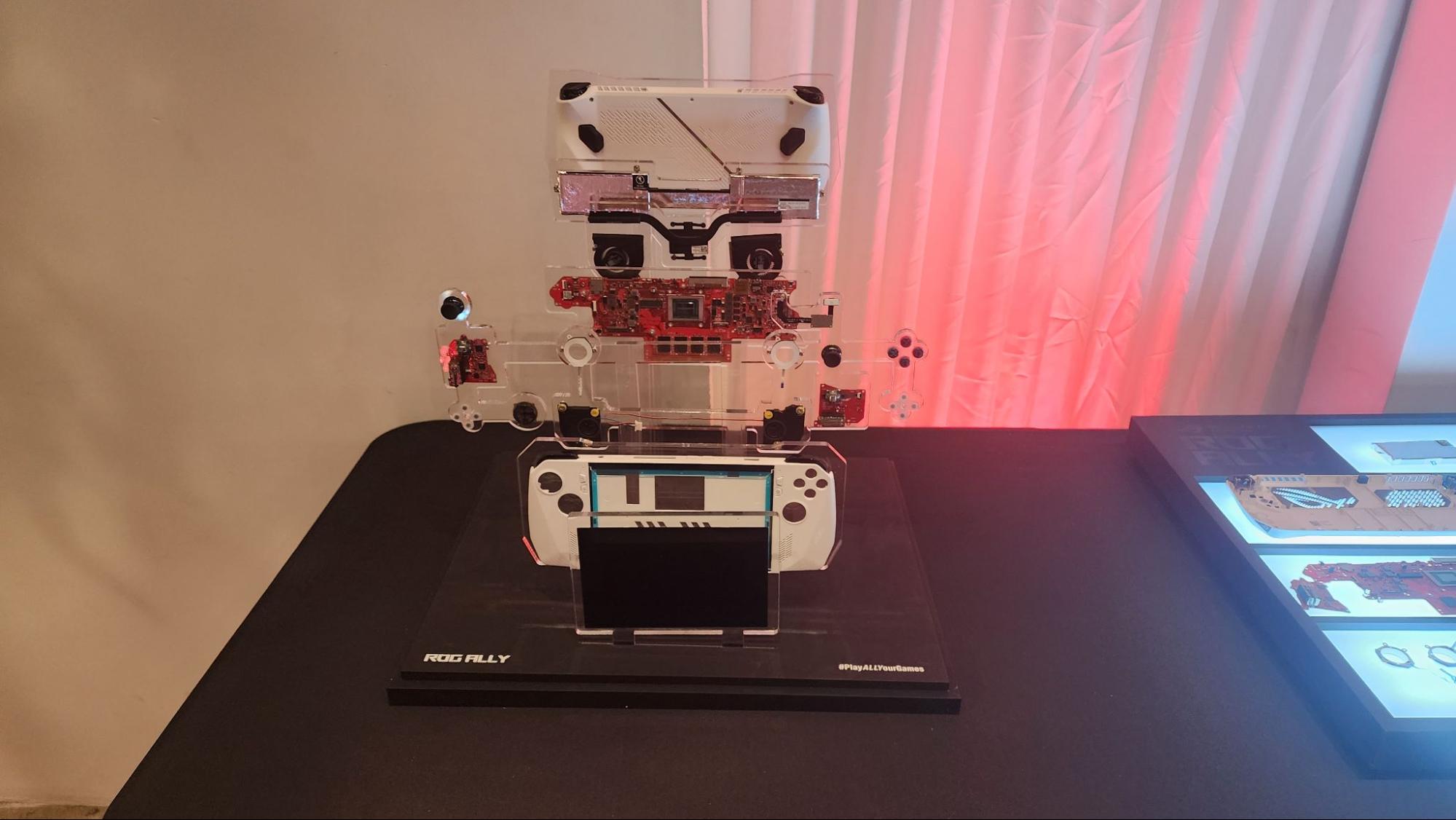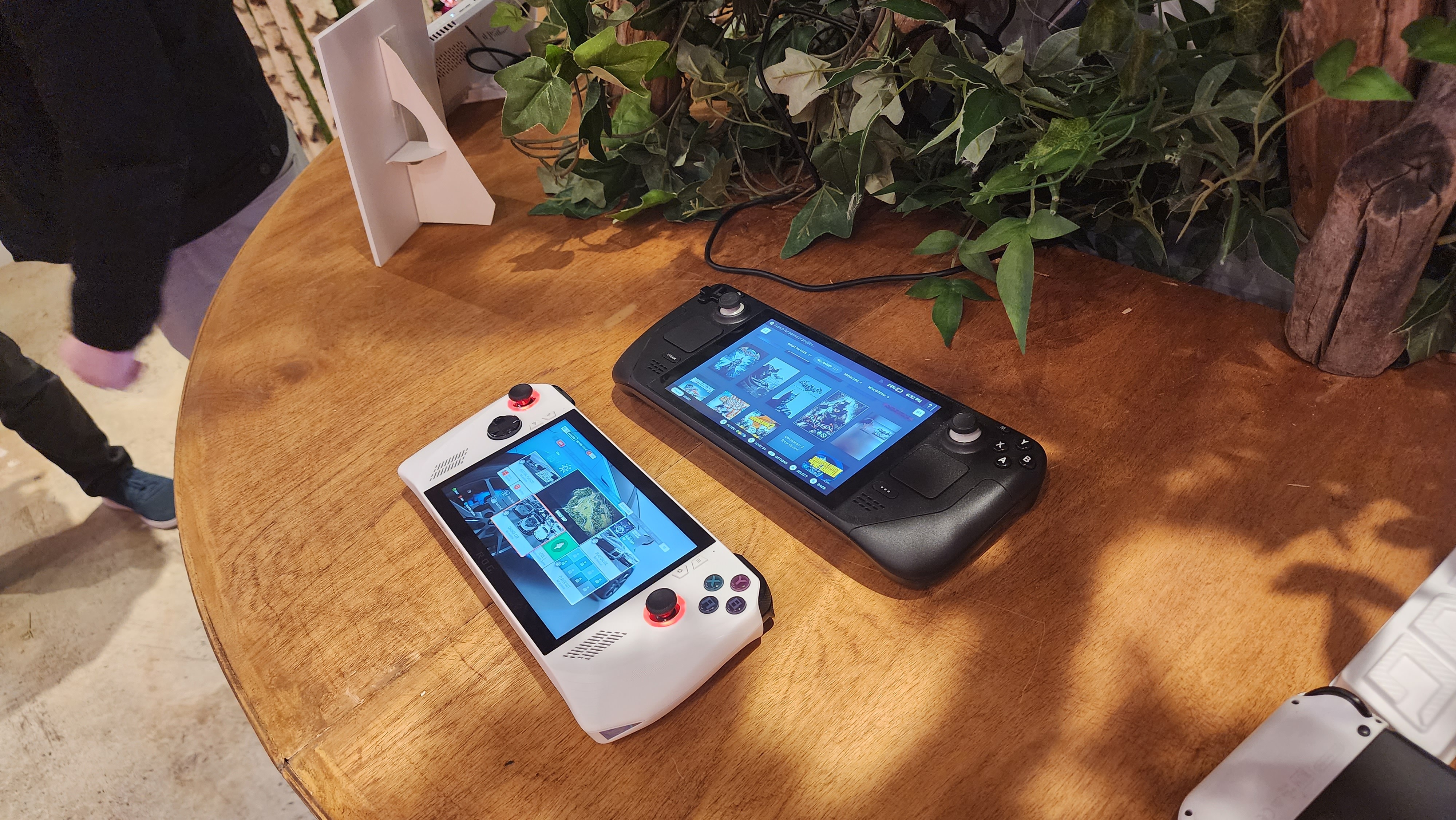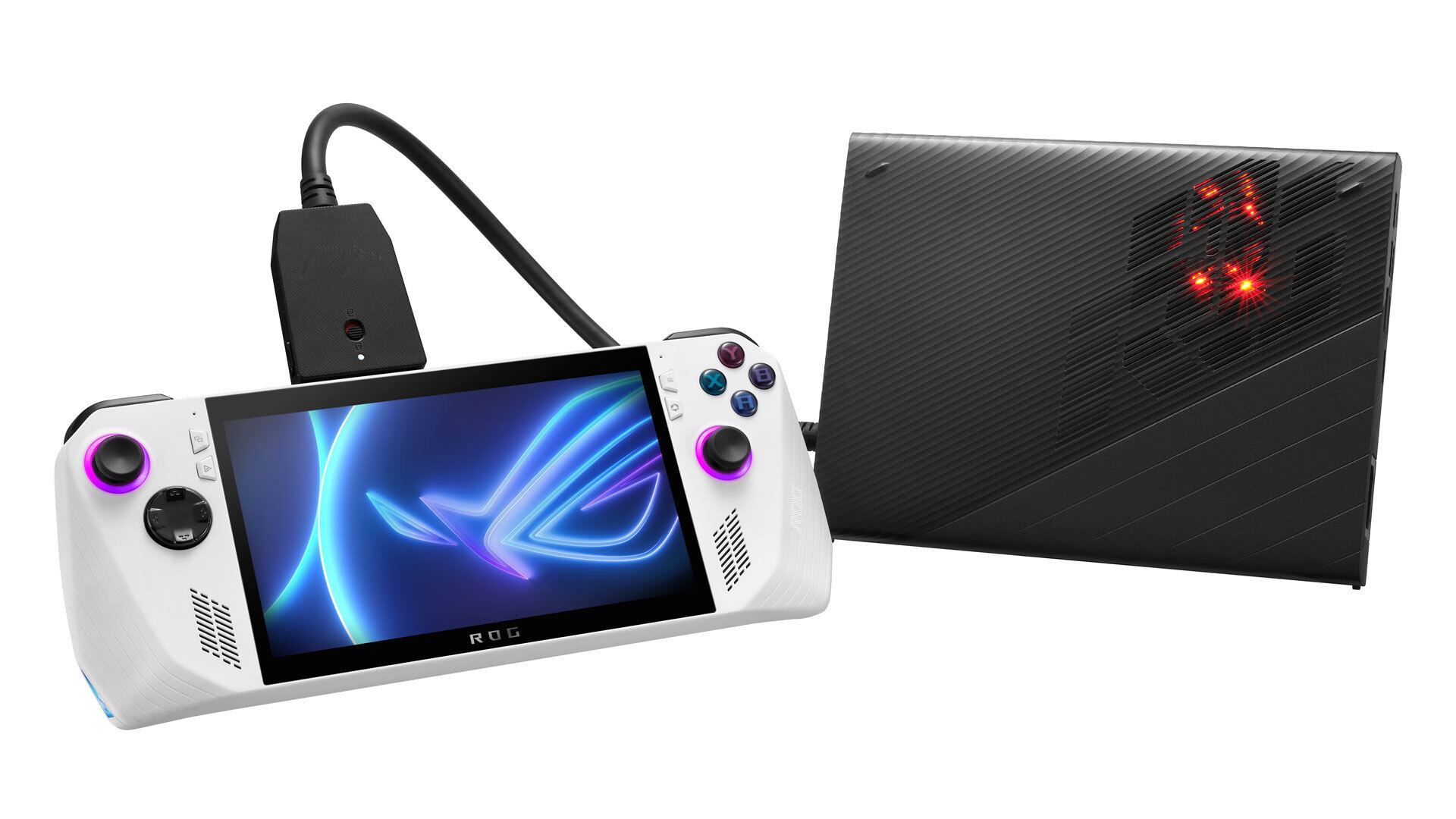AMD Ryzen Z1 and Z1 Extreme APUs Debut in Asus ROG Ally Handheld
But still no price!
After a confusing April Fools' Day announcement, Asus is making it 100% clear. The Asus ROG Ally gaming handheld is real, it's coming soon, and it comes in configurations with two different custom AMD processors.
Those two processors are the AMD Ryzen Z1 and Ryzen Z1 Extreme. Both use Zen 4 cores with RDNA graphics on a 4nm process. The regular Z1 is a 6-core, 12-thread CPU and has four RDNA 3 compute units for graphics, while the Z1 Extreme bumps that to eight cores and 16 threads with 12 RDNA 3 compute units. On the Steam Deck, Valve's Ryzen-based Aerith SoC has four cores, eight threads and eight RDNA 2 compute units for graphics.
| APU | Cores/Threads | Graphics | Cache |
| AMD Ryzen Z1 Extreme | 8/16 | 12 AMD RDNA 3 compute units | 24MB |
| AMD Ryzen Z1 | 6/12 | 4 AMD RDNA 3 compute units | 12MB |
No matter which APU you go with, the Ally comes with 16GB of DDR5 RAM and a 512GB PCIe 4.0 SSD (to expand storage, you can also use the system's UHS-II micro SD card, though it's relatively slow with up to 312 MBps max speed). Both variants match the top-end $649 Steam Deck on storage capacity, though the Steam Deck uses a slower UHS-I micro SD card slot. Connectivity includes Wi-Fi 6E and Bluetooth, but, like the Steam Deck, Asus is skipping out on 5G and 4G LTE.
The processor situation warrants further discussion. The Z1 comes with more CPU muscle than the Steam Deck's APU, but its graphics solution will potentially be half as fast since there are only four CUs. The Z1 Extreme fixes that problem and then some, offering 50% more compute units than the Steam Deck. Performance will also depend on the GPU clocks, which may or may not be higher than the Steam Deck's GPU.
The display is a 7-inch, 1080p touchscreen with a 16:9 aspect ratio that runs at up to 120 Hz using Gorilla Glass Victus. Asus claims a max of 500 nits brightness. The Steam Deck's screen is also 7-inches, but with a 16:10 aspect ratio, a lower 1280x800 resolution and a 60 Hz refresh rate.
Clearly, outside of the aspect ratio, Asus wins on paper here, at least for the Z1 Extreme. But there's an open question as to how many games will take advantage of the 120 Hz refresh rate, and what that will do to battery life. When we reviewed the Steam Deck, Valve said its battery life estimate was for a 30 frames-per-second limit. Asus claims up to 8 hours of battery life, but we'll have to see what that's like when we get one in our hands.
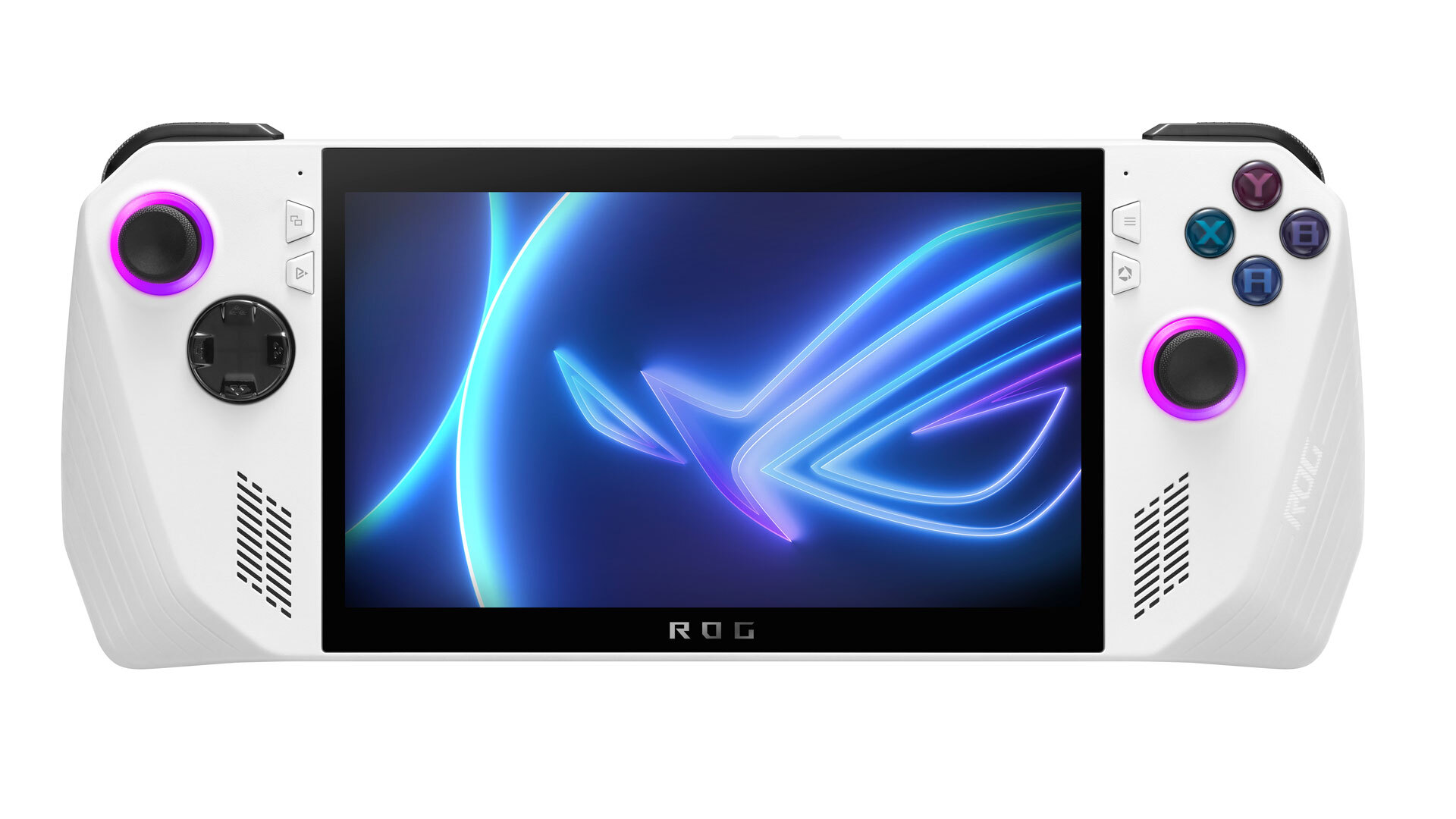
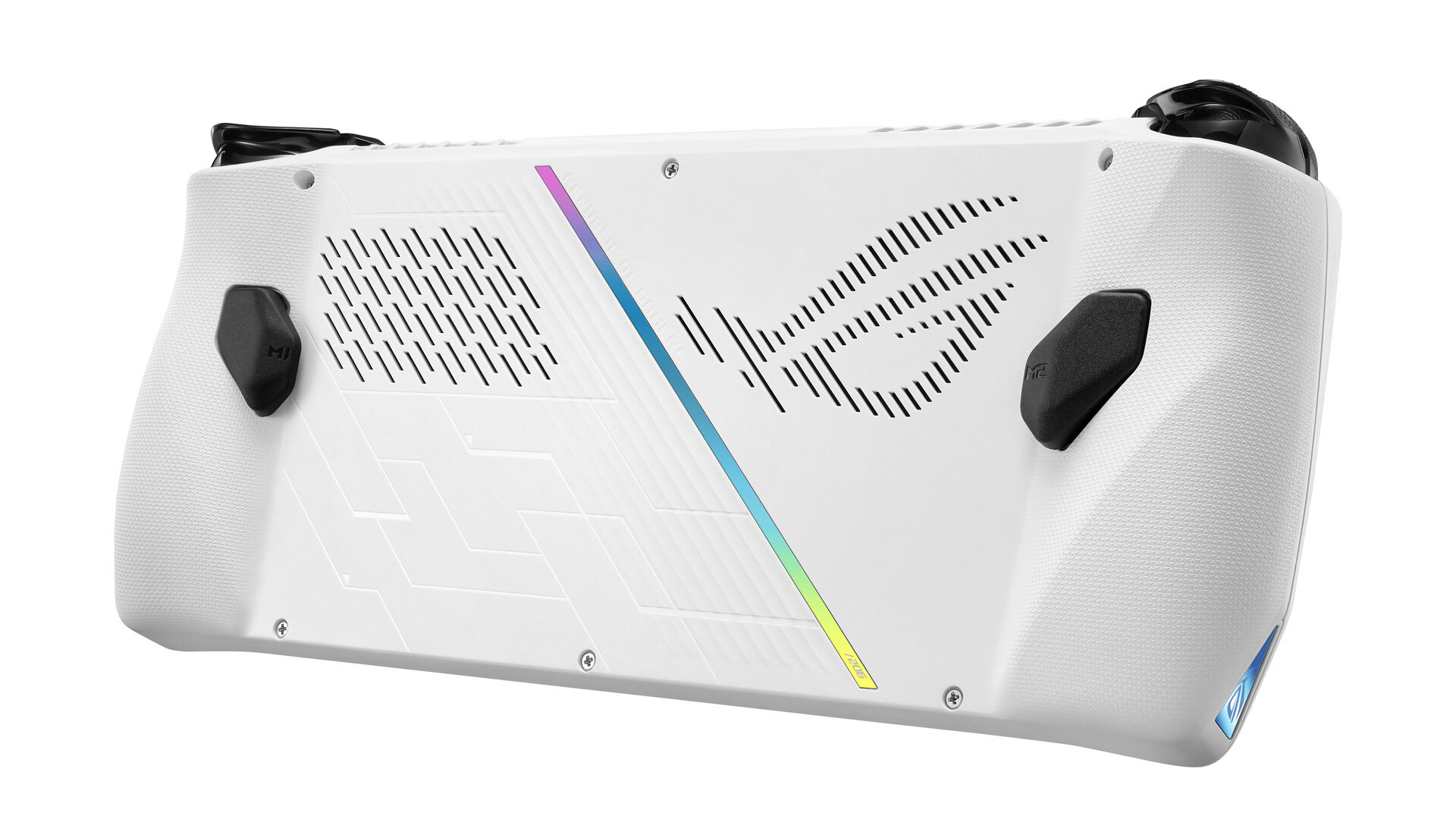
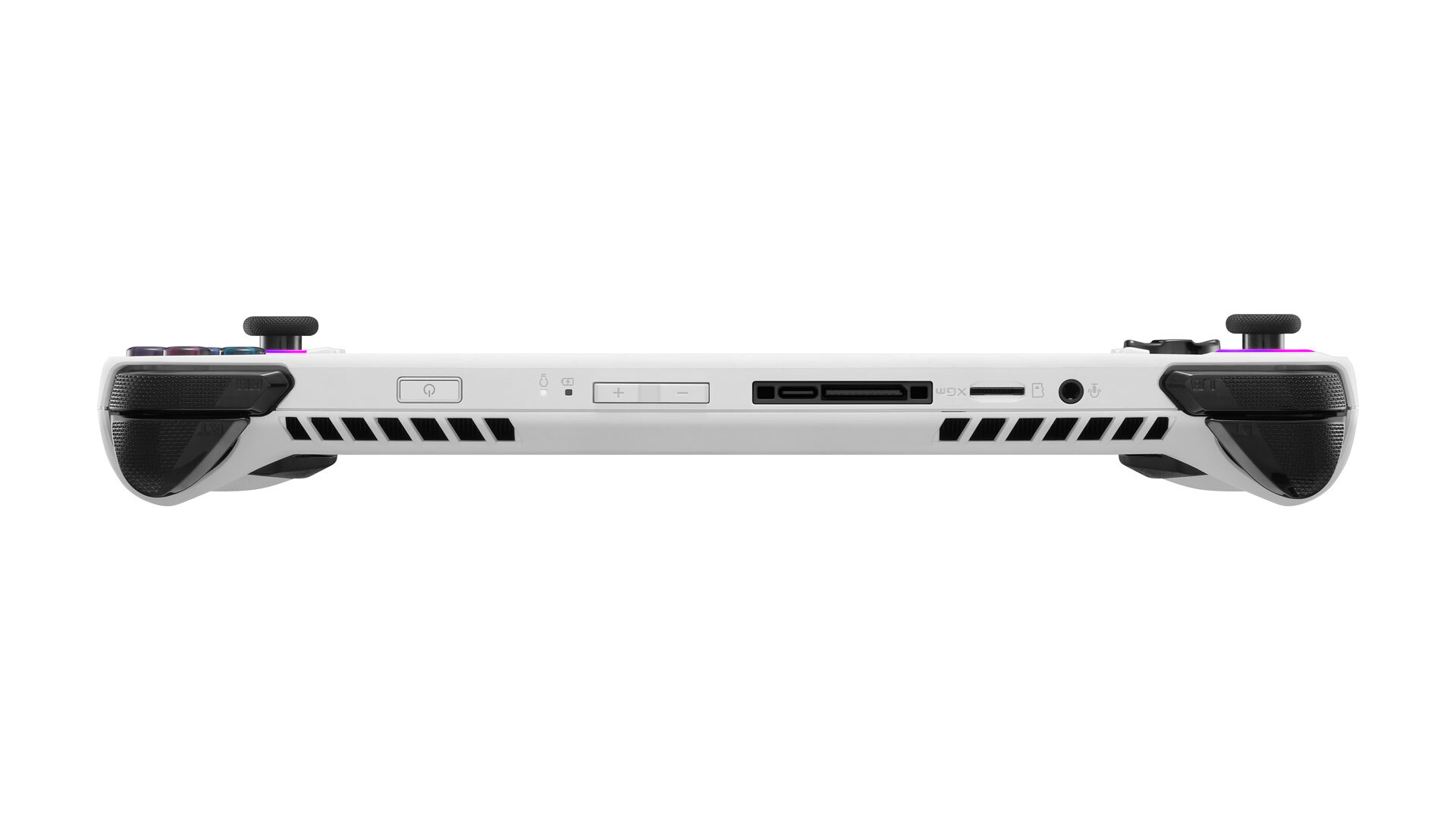
Asus is running Windows 11 on the ROG Ally. The benefit here is that basically everything runs on Windows, including Steam, Epic Games, Nvidia GeForce Now, Xbox Game Pass, and the wide variety of launchers from game publishers. SteamOS, which Valve uses on its handheld, only plays Steam Games, though you can install Windows there if you like.
But SteamOS works excellently with controllers, while Windows leaves a lot to be desired there. Asus will have its own Armoury Crate UI and overlay for making changes while in game, but we'll have to spend time with it to see if it's any good. This new version of Armoury Crate will also control haptic feedback, let you switch between handheld, keyboard, and desktop modes, and let you customize joystick dead zones.
The other benefit for using Windows may be with performance. There won't be any emulation, like with games using Proton on the Steam Deck.
The company is touting a "zero-gravity thermal system" to keep the Ally cool, with heat pipes that work no matter how you hold the Ally. It likens it to the cooling systems it uses in the 2019 ROG Mothership (which was quite loud) and the Flow Z13 tablet. Asus claims that with a single fan running, it will reach 30 dB, while it's a quieter 20 dB with both fans.
At 608 grams (1.34 pounds), the Ally is lighter than the Steam Deck. Without the touchpads, it sheds a significant amount of its footprint, too. Asus has gone with an Xbox-style layout here, which makes sense considering that's what most PC games use. There are asymmetrical joysticks, a D-Pad and A, B, X, and Y buttons, bumpers and triggers. While the Steam Deck has four rear buttons, the ROG Ally only has two. Asus also includes a fingerprint reader in the power button for use with Windows Hello.
Some models will work with Asus' XG mobile graphics dock. Currently, that goes up to an RTX 4090 and costs a whopping $2,000. But if you do own one, it will allow for higher fidelity gaming when you plug the Ally into a monitor.
Maddeningly, Asus has yet to release the actual price. The most expensive Steam Deck is $649 with 512GB of storage and an anti-glare screen, while the cheapest is $339 with 64GB of eMMC storage (both include carrying cases). I don't expect to see Asus match the low-end Steam Deck, though the lesser Z1 model might get somewhat close. With these specs, Asus is clearly playing in the top-tier category. My gut feeling is that Asus won't be able to match Valve, which can subsidize hardware by taking a cut of games sales. We'll find out whenever Asus decides it's ready to announce.
For now, those interested in pre-order information can sign up on Best Buy's website to learn more about the system when it's ready for sale. In its own release, AMD said the Ally will have more information about pricing and availability on May 11.
Get Tom's Hardware's best news and in-depth reviews, straight to your inbox.

Andrew E. Freedman is a senior editor at Tom's Hardware focusing on laptops, desktops and gaming. He also keeps up with the latest news. A lover of all things gaming and tech, his previous work has shown up in Tom's Guide, Laptop Mag, Kotaku, PCMag and Complex, among others. Follow him on Threads @FreedmanAE and BlueSky @andrewfreedman.net. You can send him tips on Signal: andrewfreedman.01
-
salgado18 When you get to review it, please try to get both versions.for the benchmarks. The faster one has 3x the gpu power of the slower (which I don't think makes any sense).Reply -
thestryker I'm once again disappointed by the way AMD does the lower CPU core count IGP. While I think they should both be 12 cutting it down to 4 seems rather ridiculous especially for a handheld device. Ideally you'd want the fewest number of very efficient CPU cores with the highest possible IGP.Reply -
citral23 Sorry but the lower end one is clearly not a custom gaming apu with the cpu cores/gpu cus imbalance, marketing bs.Reply
Which makes me highly doubtful the better one is a custom gaming apu either.
Could turn out the deck's apu which is a true custom gaming apu, performs favorably at lower tdps tbh. We'll see. -
hannibal Most likely $999 to $1099 for the extreme version and $499 to $599 for normal version…Reply -
PEnns OK, somebody explain to me the following: How is this expensive "gaming" thing is different from gaming on a high-end smart phone?? It's almost the same size too.Reply
Sure, it has better controls, but what else?? At least your smart phone can do 50 other very useful things and has up to 1 TB of storage..., but what can this very expensive toy do beside gaming?? And besides, even the screen size is almost the same!
As to the versions that cost around $2000...seriously? How about a fully loaded laptop or a PC instead?? -
bit_user Reply
Exactly. The GPU in the non-Extreme version seems too weak. Should be 6 or 8 CUs. 4 sounds like a bad joke.salgado18 said:When you get to review it, please try to get both versions.for the benchmarks. The faster one has 3x the gpu power of the slower (which I don't think makes any sense).
I've seen a slide from AMD showing the relative average performance, where the non-Extreme seems at the lower end of viable. However, it would be telling to see the 1% outliers. I'll bet it turns into a slideshow, at some points.
Yes. If it's not meant to be for gaming, then that would explain the imbalance.citral23 said:Sorry but the lower end one is clearly not a custom gaming apu with the cpu cores/gpu cus imbalance, marketing bs. -
citral23 Reply
Errr... News Flash: Your phone doesn't run PC gamesPEnns said:OK, somebody explain to me the following: How is this expensive "gaming" thing is different from gaming on a high-end smart phone?? It's almost the same size too.
Sure, it has better controls, but what else?? At least your smart phone can do 50 other very useful things and has up to 1 TB of storage..., but what can this very expensive toy do beside gaming?? And besides, even the screen size is almost the same!
As to the versions that cost around $2000...seriously? How about a fully loaded laptop or a PC instead?? -
bigdragon I'm surprised at the graphics differences between the AMD normal and extreme chips. There's a 25% difference in CPU cores but a 66% difference in IGP cores. That doesn't seem right. The 50% cache difference is also a bit alarming. I would have expected closer numbers.Reply
Steam Deck is a product designed to compete in the broader console and handheld gaming market. It steps into a market that Sony vacated and that Nintendo easily dominates. Enough performance, accessible price, capable design, and large game library creates success. I think Asus is going way more niche with the Ally. Niche means expensive, limited, and tempermental to me. Seeing the XG Mobile support tells me Asus thinks their market is a bunch of bullets on a whiteboard rather than the same people Sony and Nintendo tried/try to attract.
You forgot to add the ROG tax!That will likely bump it up to $799.99 for the normal version and $1299.99 for the extreme version. Asus is not a company that likes to compete on price. The Ally will also need to be supported by a massive marketing budget to gain the kind of adoption numbers Asus likely wants to see.hannibal said:Most likely $999 to $1099 for the extreme version and $499 to $599 for normal version… -
bit_user Reply
Given that it runs Windows11, it seems to me the "library" they're going after is the majority of Windows games.bigdragon said:Enough performance, accessible price, capable design, and large game library creates success. I think Asus is going way more niche with the Ally. Niche means expensive, limited, and tempermental to me. Seeing the XG Mobile support tells me Asus thinks their market is a bunch of bullets on a whiteboard rather than the same people Sony and Nintendo tried/try to attract.
In this regard, I think even the Extreme is still a little underpowered, as it seems essentially like a RX 6400. That's not exactly the ideal card for 1080p gaming.
